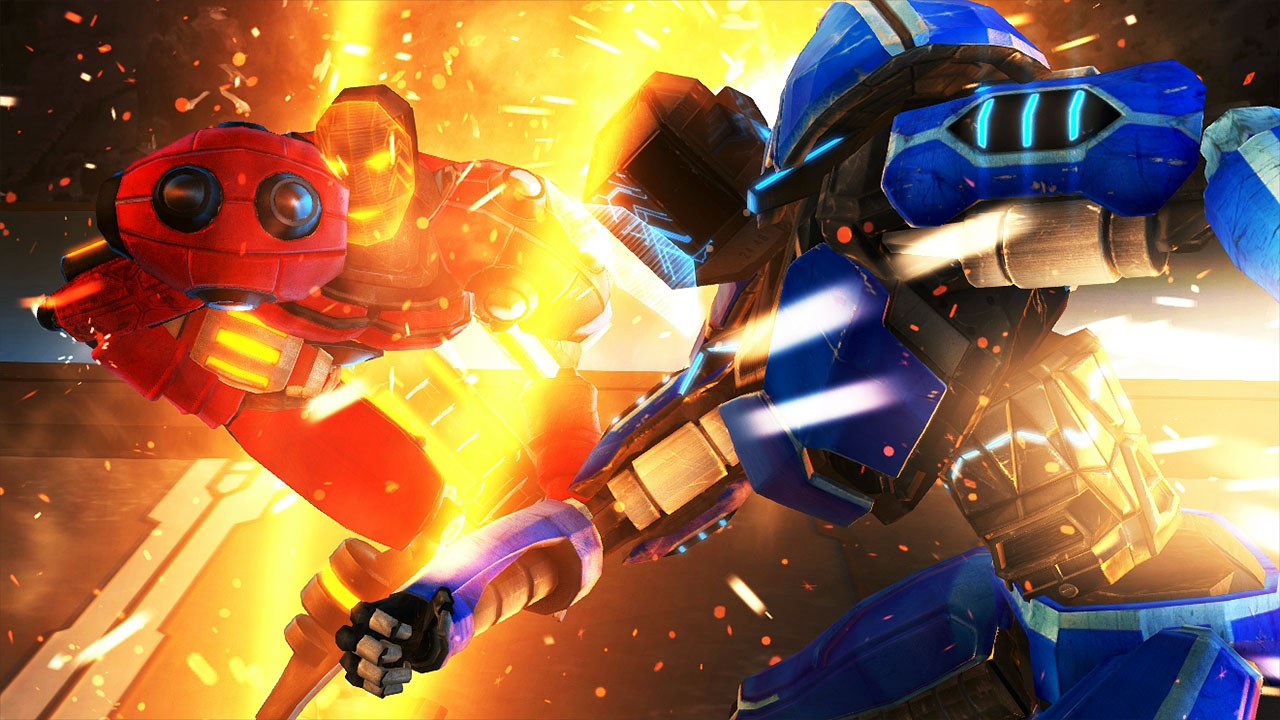Frozen Synapse devs on why Frozen Cortex was a conceptual failure

Tom Francis is a former writer for PC Gamer and current game developer who offered to give us his thoughts on some of the GDC sessions he's attending this year. You can follow the development of Tom's next game, Heat Signature, at its official site.
As a developer myself, one of the most interesting parts of the Game Developer’s Conference each year is the Failure Workshop: a session where developers step up to talk about projects that failed, and where they went wrong. It’s not quite where I expected to see Paul Taylor of Mode7 Games, creators of the massively successful Frozen Synapse, and the quite successful Frozen Cortex. I know Paul, and as far as I know he and dev partner Ian Hardingham haven’t had a failure since their crazy flying sword-fighting game Determinance—and even that I think was pretty cool. But he was there to talk about Frozen Cortex, not because it failed commercially—it didn’t—but because the public reaction to it has made them see it as a failure of concept.
Frozen Synapse is a top-down, turn-based tactics game: you issue waypoints to your squad of gunmen, hit ‘Commit’, and watch the action play out. Taylor says that concept works for people in trailers: “When you see it, you can see what kind of fun you’ll be having.”
Their idea for a followup was to take the turn-planning system that worked so well, and add something to it—“frame it in a new way”. Where Synapse had been inspired by Laser Squad Nemesis, their follow-up would draw from 2004 fantasy sports game Chaos League. But rather than an orcs-and-goblins setting, they wanted to make it a future sport.
Taylor showed the original trailer for Frozen Endzone, as it was originally called, to explain what they thought was the compelling concept. Its look is immediately different to Synapse—instead of abstract blueprint style, it’s a sports arena on top of a skyscraper, a gleaming metal city stretching off around it. And where Synapse involves small glowing men scuttling around far beneath you, Endzone switched to a cinematic camera to show close-ups of your angry sports robots enacting your plan with full, violent animation.
“It showed you making a plan, and that being interpreted into amazing animations.” Mode7 thought that was the core of the game, and that it would be “something that really excited people.”
The disparity between that and the actual public reaction became clear immediately: Taylor showed “some of the more polite comments” on YouTube, some of which do credit the new art style or the appeal of a Synapse-style planning system, but all of which ended with some variation of “too bad it’s just a sports game”.
Keep up to date with the most important stories and the best deals, as picked by the PC Gamer team.
“It’s still about handegg,” one comment concluded. “An unfortunate phrase I wasn’t familiar with, but which I’d be hearing a lot over the four years we worked on the game,” Taylor says.
They tried to adapt to the feedback. They felt it was being wrongly interpreted as an American football game rather than seen as a sport in its own right. So they changed the name to Frozen Cortex, removing the football reference and replacing it with a strong connection to Frozen Synapse. They visually redesigned the goals to make them less like those of American football, and released new trailers to showcase more fantastical settings like a fiery underworld. Their next batch of shots featured close-ups of robots clashing with spectacular sparks, again trying to stress the less traditional elements.

But none of this really solved the problem. “There wasn’t a core fantasy at the heart of it,” Taylor says. Frozen Cortex still made money, and got good reviews from PC Gamer and Eurogamer. But Paul feels they still suffered from the problems of the core concept. He expanded on this to me afterwards: "Of course there will be people for whom that is exciting and who can see what you're trying to do: we certainly don't regret making the game in any way. It's great to have fulfilled that need for those players who love the game. It's just that a specific combination of things can alienate as many people as it attracts."
He points to Rocket League as the counter-example: it “made the sports aesthetic so absurd you want to try it. It takes you out of the world of sports and makes you say ‘Wow, what’s that?’—which is what we failed to do.”
Mode7 applied this lesson in choosing what to make next: they’re now doing Frozen Synapse 2. In a way it starts from a similar place: take what worked about Frozen Synapse and expand it. But this time the core concept is already proven and successful: they already know people like the plan-and-execute tactical gunplay. So what they’re adding is a huge procedurally generated city around that, one where you can choose to infiltrate any building and perform missions for or against any of the city’s factions.
Frozen Cortex wasn’t my cup of tea, and Frozen Synapse 2 looks like it absolutely will be. But I hope the lesson here is not “stick to what you know”, or “don’t be too adventurous”. Once Synapse 2 is done, even if it’s massively successful, I hope Mode7 wouldn’t be averse to trying something nutty again, if the core concept appeals to them.

